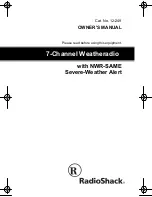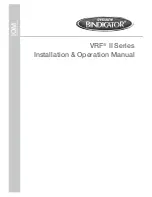
(No.RA018<Rev.002>)1-15
(6) Attach two spacers to the back side of the orange rubber
seal as indicated below.
Note:
Rubber seal may not attach correctly if the spacer is
brought near by the corner too much.
(7) Reinstall the cover and orange rubber seal using the 4
screws removed in step 2 and 3.
Note:
When installing the rubber orange seal on the chassis,
ensure that you do not damage the rubber seal and that
the contact area of the chassis is dust-free.
Note:
• When the KWD-AE30/ KWD-AE31 is installed, select the
"Secure Cryptographic Module" checkbox in the Product In-
formation of the KPG-D1/KPG-D1N (programming soft-
ware), and then set each parameter.
• If the KWD-AE30/ KWD-AE31 connector is not properly in-
stalled, the TX/RX indicator will blink red or "No SCM" will
appear on the display when the transceiver power is turned
on.
• If the Encryption Key data is not written at the Keyloader, or
the Encryption Key data is zeroized, "Key Fail" will appear
on the display.
• If the KWD-AE30/ KWD-AE31 is installed in other transceiv-
ers, the Encryption Key data will be forced to zeroize.
2.4
CIRCUIT DESCRIPTION
2.4.1 Overview
The NX-5200 is a VHF Analog FM & Digital Portable transceiver designed to operate in the frequency range of 136 to 174MHz.
The unit consists of a receiver, a transmitter, a phase-locked loop (PLL) frequency synthesizer, a digital control unit, and a power sup-
ply circuit.
2.4.2 Frequency Configuration
The receiver is a double-conversion super-heterodyne using a first intermediate frequency (IF) of 49.95MHz and second IF of
2.25MHz. Incoming signals from the antenna are mixed with the local signal from the PLL circuit to produce the first IF of 49.95MHz.
This is then mixed with the 47.7MHz second local oscillator output to produce the 2.25MHz second IF. The transmit signal frequency
is generated by the PLL VCO, and modulated by the signal from the DSP. It is then amplified and fed to the antenna.
Fig.1 Frequency configuration
2.4.3 Receiver System
2.4.3.1
RF Circuit
The receive signal from antenna switch (D350, D351, D370 and D371) is amplified by a RF amplifier (Q530) and passes through the
band-pass filter (L530, L535, L520 and L532) to remove unwanted signals. The signal is then fed to the 1st mixer (Q500).
2.4.3.2
IF Circuit
The first IF signal is passed through a four-pole monolithic crystal filter (XF670) to reject adjacent channel signals. The filtered first IF
signal is amplified by the first IF amplifier (Q670 and Q660) and then applied to the IF system IC (IC600). The IF system IC provides
a second mixer, second PLL, AGC and A/D converter.
The second mixer mixes the first IF signal with the 47.7MHz of second local oscillator output and produces the second IF signal of
2.25MHz.
The second IF signal is then be fed into an A/D converter, generates the I and Q data. This data is in the form of SSI (Serial Synchro-
nous Interface), and sent to the DSP (IC702).
Spacer
ANT
1st MIX
49.95MHz
47.7MHz
SP
19.2MHz
MIC
ANT
SW
PA
AMP
RF
AMP
TX
AMP
MCF
MIX
IF Circuit
TCXO
RX PLL
VCO
VCO
2nd
TX PLL
VCO
Baseband
Circuit
CODEC
AF
AMP
TX/RX: 136~174MHz
136~174MHz
185.95~223.95MHz
















































